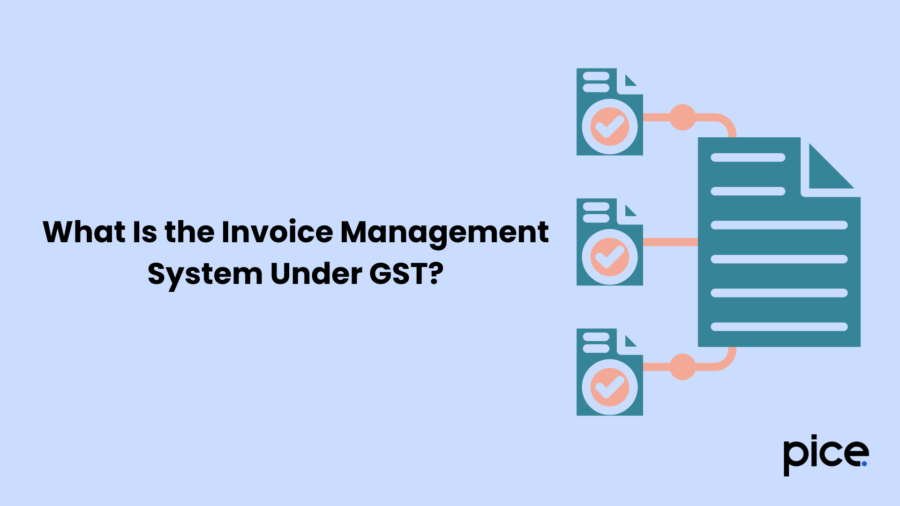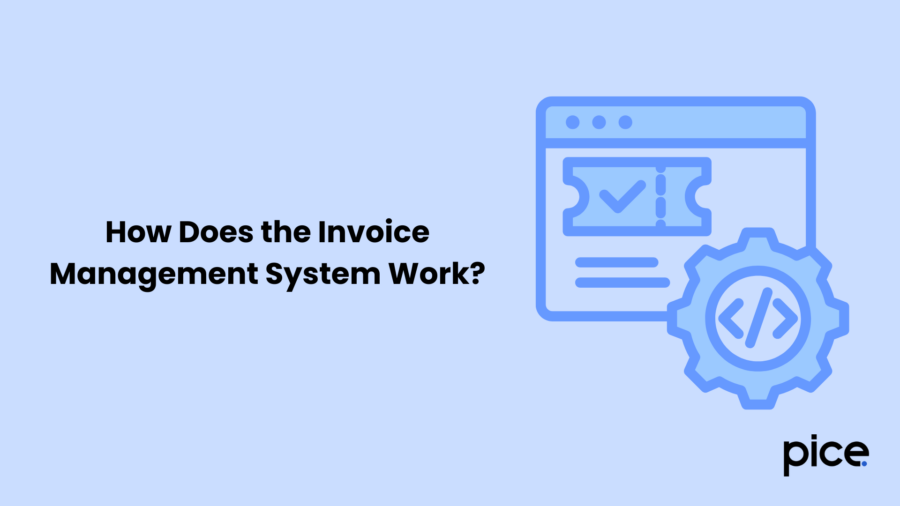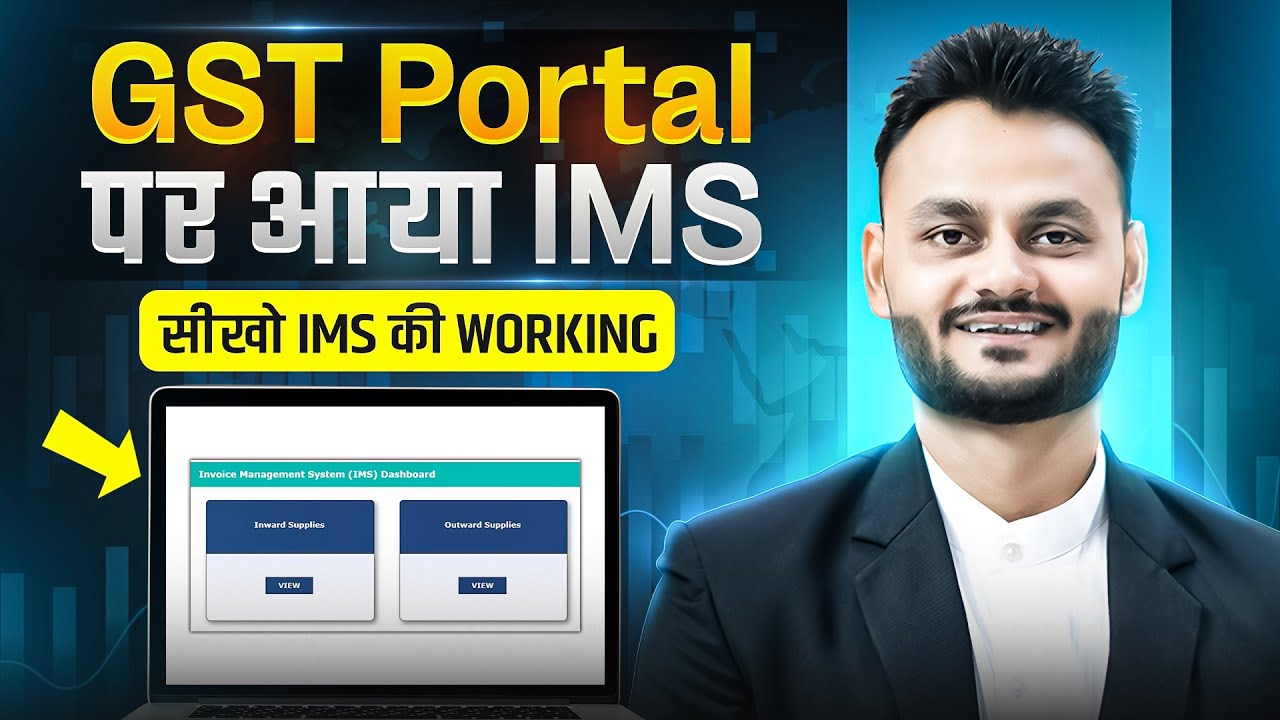What Is an Invoice Management System (IMS) Under GST?
- 5 May 25
- 9 mins

What Is an Invoice Management System (IMS) Under GST?
Key Takeaways
- IMS lets recipients accept, reject, or defer invoices before filing.
- It streamlines GST compliance with a unified dashboard.
- Helps prevent ITC mismatches and errors.
- Makes audits and invoice tracking easier.
- Likely to become mandatory soon under GST rules.
The Invoice management system (IMS) is one of the recent features of the Goods and Services Tax Network. It has been proposed to simplify tax compliance under e-invoicing. This system significantly offers advantages to taxpayers during ITC claims and invoice management.
Many people struggle with IMS due to a lack of comprehensive understanding. They think this system might disrupt the GST processes and create a hassle during return filing. But that is not the case. Even though the implementation of IMS has not been mandated yet, its legal framework indicates that it might be mandatory soon.
Handle all your sales and purchase invoices in one place.
Pice’s all-in-one invoice management tool helps you track, send, and organize invoices from a single dashboard. Automatically share new invoices with customers, send timely payment reminders, and keep your collections under control—effortlessly.
Want early access? Fill out this form to get request a demo!
Read this blog to get a comprehensive understanding of the invoice management system, how it works and its benefits.
What Is the Invoice Management System Under GST?

In late 2024, the GST portal added the invoice management system, as a new feature to simplify the tax filing process. As per this new invoice management process, when supplier taxpayers save or file invoices, recipient taxpayers have the authority to accept, reject or keep those invoices pending during their filing schedule.
IMS came into the picture to resolve consistent issues of incorrect invoices when GST input tax credit was claimed by the supplier and the recipient. The invoice data filed by the suppliers was inconsistent with the returns filed by the recipients.
In the AP Automation and Invoice Management Software Report, it has been highlighted that digitising the invoice process using IMS has streamlined the processes of invoice capture, approval and payment.
Any regular recipient taxpayer, including the QRMP taxpayers, is eligible to adopt the functionalities of IMS. QRMP taxpayers fall under the QRMP scheme which allows them to file for quarterly returns.
What Is the Impact of Invoice Management System?
Invoice management system not only helps with tax compliance but also provides strategic advantages to businesses. Let us look at the impact of IMS:
1. Streamlined Tax Reporting
IMS is a single platform to auto-generate GSTR-2B with minimal intervention. It also helps to manage all kinds of supplier invoices giving the suppliers as well as the recipients the ultimate control. They can check the dashboard records and update them accordingly. This way businesses save a lot of time and energy during tax compliance.
2. Enhanced Communication
IMS uses a single dashboard, thus facilitating seamless invoice communication between suppliers and recipients. This enables both parties to get a connected finance ecosystem. In addition, it enhances transparency in business relations by acting in accordance with GST requirements.
3. Flexibility in Invoice Management
Utilising invoice management system suppliers have the opportunity to amend invoices fast through GSTR-1A. This flexibility allows them to rectify errors anytime in a seamless manner. This ensures that there is no inconsistency in the documentation.
4. Decision-making Support
IMS dashboard assists in better decision-making for businesses. The clear overview of invoices supports their strategic auditing and planning in the future. This proves that besides simplifying tax management and bulk invoicing, IMS has more value.
How Does the Invoice Management System Work?

When it comes to availing input tax credit (ITC), taxpayers often face issues with GST compliance like duplicate invoices, mismatched information regarding business transactions and so on. IMS has been functional in order to provide relief from these issues.
Here is how the system works:
- Firstly, by the 11th of every month, suppliers submit and save a GSTR-1 form containing all kinds of sales details. Then, using the invoice furnishing facility (IFF), they amend GSTR-1A in the GST portal. The suppliers can submit the GSTR-1A until a recipient taxpayer submits the GST returns (GSTR-3B) for that particular tax period.
- Once the GSTR-1A submission is complete, the IMS dashboard shows it to the recipient taxpayers and eventually in their current month's GSTR-2B, which is an auto-drafted ITC statement.
- The dashboard also includes information like the supplier’s GSTIN, invoice number, trade name and type.
- At this point, the recipient taxpayer will have three options. They can accept, reject or keep it pending. The recipient taxpayer needs to do it within the time range between the supplier’s uploading the GSTR-1 or GSTR-1A form and the recipient’s filing GSTR-3B by the 20th of the corresponding month.
- If a recipient taxpayer is willing to take action on the invoice, they have to recompute the draft of GSTR-2B.
- When a recipient chooses to “ACCEPT” the invoice, the accepted invoice becomes a part of the auto-generated ITC (input tax credit) statement or GSTR-2B generation. GSTR-2B cut-off date is the 14th of every month.
- In case a recipient decides to “REJECT” an invoice, GSTR-2B does not include it in the invoice reference.
- If a recipient decides to keep the invoice “PENDING”, the GST portal does not include it in the running month’s GSTR-2B. It gets carried forward to next month.
- In case a recipient does not act on the invoice, the invoice management system considers this as “deemed accepted”. So, the invoice gets automatically included in GSTR-2B.
- When a supplier amends an accepted or pending invoice, it replaces the old one. The recipient acts on the newly updated invoice.
- At the time a supplier amends GSTR-1, based on the provided information in GSTR-1A, IMS automatically updates the information in the recipient's GSTR-2 B. It does not take place in the running month but in the subsequent month.
- Taxpayers have the authority to avail “pending” invoices in any subsequent month based on the maximum limit mentioned in Section 16(4) of the CGST Act, 2017.
Benefits of Invoice Management System
The introduction of IMS by GSTN has made claiming input tax credit and management of invoices smooth, efficient and transparent for the taxpayers. Furthermore, it has reduced confusion during tax filings and discrepancies in tax filings.
The following are some benefits of IMS:
1. Ensures Precision in Audit
Using IMS, auditors can check every invoice of the current return period without accessing multiple interfaces. Integration of different management systems under a single framework decreases redundancy. This ensures that the organisation is operating under all the pre-established standards and thus assists in avoiding an audit error, if any.
2. Streamlined Invoicing Process
IMS makes the invoicing process completely streamlined for suppliers and recipients. From auto-generation of GSTR-2B to editing invoices, everything becomes simple and effortless. Not using IMS might prevent compliance issues, leading to penalties.
3. Minimal Error
The summary view available at the IMS dashboard of the GST common portal reduces the risks of missing out on any invoices prior to filing GSTR-2B and GSTR-3B. Unable to keep track of invoices might lead to greater complications.
What Are the Latest Updates of IMS in the 55th GST Council Meeting?

There are some critical invoice management system (IMS) updates mentioned in the 55th GST Council Meeting. Let us shed some light on them:
- The GST council has proposed to amend Section 34(2) of the CGST Act, 2017. This act restricts suppliers from decreasing their GST liabilities using credit notes unless recipients have reversed associated ITC. This will help both suppliers and recipients to remain on the same page.
- GST council has proposed a new rule (67B) under the CGST rules, 2017. This rule states how suppliers' output tax liability gets adjusted against the issued credit notes. This helps in maintaining flawless financial records and avoiding confusion.
Conclusion
In order to enhance user experience within the GST ecosystem, the invoice management system has been implemented. Its single dashboard provides suppliers as well as recipients with communication functionality, assess and review information to ensure accurate reporting in the invoices and auto-generation of GSTR-2B.
So, even though IMS has not been mandated by the GSTN, it falls under business liabilities. So, implementing IMS not only helps them to make correct claims but also helps them to get a safety net for their businesses.
💡If you want to streamline your invoices and make payments via credit or debit card or UPI, consider using the PICE App. Explore the PICE App today and take your business to new heights.

















